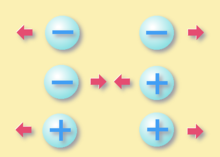 The movement, for mechanics, it is a physical phenomenon that involves the change of position of a body that is immersed in a set or system and it will be this modification of position, with respect to the rest of the bodies, which serves as a reference to notice this change and this is thanks to the fact that every movement of a body leaves a trajectory.
The movement, for mechanics, it is a physical phenomenon that involves the change of position of a body that is immersed in a set or system and it will be this modification of position, with respect to the rest of the bodies, which serves as a reference to notice this change and this is thanks to the fact that every movement of a body leaves a trajectory.
Movement is always a change of position with respect to time. Consequently, it is not possible to define movement if it is not done in a defined context, both in terms of space and time frame.
Although it is striking, it is not the same to talk about movement and of displacement, since a body can change position without moving from its situation in the general context. An example is given by the activity of the heart, which constitutes a movement without associated displacement.
Meanwhile, physics, which is the faithful student of this phenomenon, has two internal disciplines that are dedicated, separately, to delve into this theme of the movement. On one side is kinematics, which deals with studying the movement itself; on the other hand, it describes the dynamics, which deals with the causes that motivate the movements.
The kinematics, then, study the laws of motion of bodies through a coordinate system. It focuses on observing the trajectory of movement and always does so as a function of time. The speed (rate that changes the position) and acceleration (rate that changes the speed) will be the two quantities that will allow us to discover how the position changes as a function of time. For this reason, speed is expressed in units of distance in relation to time measurements (kilometers / hour, meters / second, among the best known). Instead, acceleration is defined in units of velocity relative to those measures of time (meters / second / second, or as preferred in physics, meters / seconds squared). It is worth noting that the gravity exerted by bodies is also a form of acceleration and explains a large part of certain standardized movements, such as free fall or vertical throw.
The body or particle can observe the following types of motion: uniform rectilinear, uniformly accelerated rectilinear, uniform circular, parabolic and the simple harmonic. The variables associated with each of these actions depend on the framework in which the aforementioned movement is carried out. Thus, in addition to distance and time, in some cases the incorporation of angles, trigonometric functions, external parameters and other more complex mathematical expressions is required.
And taking up, the dynamic it deals with what kinematics does not, which is the factors that cause motion; To this end, he uses equations to determine what moves bodies. Dynamics has been the mother science that has given way to traditional mechanics and that makes it possible from the construction of a bicycle to modern space travel.
But all this vast knowledge in the study of the movement that we exposed above, undoubtedly, is also due to the great scholars who, since the seventeenth century, were already doing trials and tests to advance on this topic. Among them are the physicist, astronomer and mathematician Galileo Galilei, who studied the free fall of bodies and particles on inclined planes. They followed Pierre Varignon, advancing in the notion of acceleration and already in the twentieth century, Albert Einstein, brought more knowledge to the subject with the theory of relativity. The great contribution of this remarkable German physicist has been to conceive that there is only one absolute variable in the known universe, which is precisely a kinematic parameter: the speed of light, which is the same in totality in a vacuum. of the cosmos. This value has been estimated at around 300 thousand kilometers per second. The other variables defined in the kinematics and dynamics are relative to this unique parameter, which is recognized as a paradigm to define the movement and understand its laws, which do not seem to differ in everyday life and in the great centers of scientific evaluation of our technological civilization.









